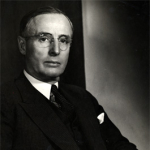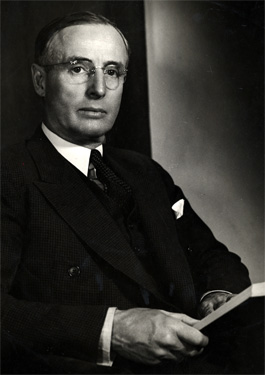 Ernest J. Jaqua was chosen to lead Scripps College in 1925, a full year before its formal opening. After Ellen Browning Scripps gave $500,000 for the establishment of a college for women, Pomona President James Blaisdell recommended Jaqua, who was then Pomona’s Dean of Faculty.
Ernest J. Jaqua was chosen to lead Scripps College in 1925, a full year before its formal opening. After Ellen Browning Scripps gave $500,000 for the establishment of a college for women, Pomona President James Blaisdell recommended Jaqua, who was then Pomona’s Dean of Faculty.
Born in Iowa in 1882 and educated at Grinnell College, Jaqua rapidly rose to positions of importance after receiving MAs from Columbia and Union Theological Seminary and a PhD from Harvard. He was named President of Scripps College in 1926 and quickly set out to build a name for the new institution.
President Jaqua assembled a board of trustees half composed of prominent southern California women, a circumstance unique in college governance at the time. He oversaw the design and construction of the first buildings on campus and was extraordinarily successful at raising money for the College, particularly from women. According to accounts by trustees, alumnae, and former faculty, he was brilliant at attracting extremely talented professors. Always an advocate for the physical campus and a proponent of its beauty, Jaqua was honored years after his Presidency with the naming of the Jaqua Central Quadrangle and Terrace in 1974.
Jaqua served as President from 1926 to 1942, 16 years of rapid development for Scripps College. These early years were far from idyllic; following the Great Depression in the late twenties and early thirties, funding became scarce, and many students had to leave the College before graduation. Faculty salaries became not only stagnant, but were reduced.
The story of Jaqua’s relationship to the College the last few years of his tenure are fascinating and complex; his relationship with faculty and students reached a low point with the milestone May 1938 Letter a group of students wrote to trustees, administrators, and influential alumnae leaders. The letter detailed concerns students had about the stability of academic programs and faculty and perceived undue interference in student affairs.
Jaqua resigned from Scripps College in June 1942. He went on to serve in war work for the government and other positions in education. He and his wife retired to Claremont in 1963 where he died in 1974 at the age of 92.


